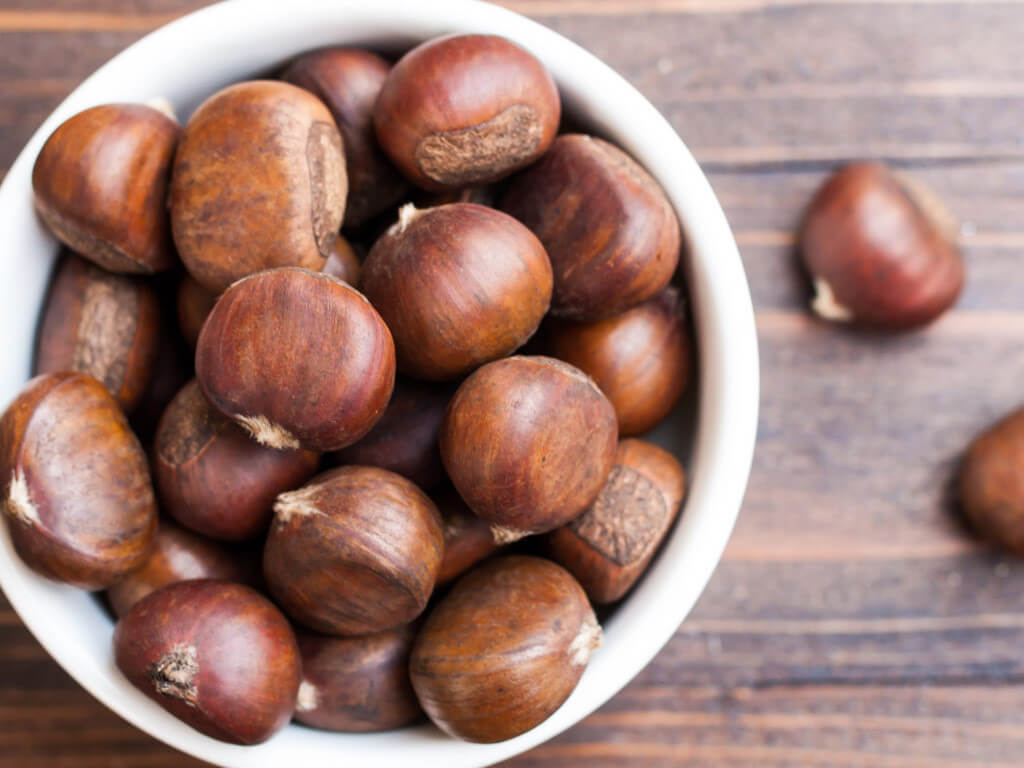1Learn about Sapa’s specialty wild chestnuts
Compared to current chestnuts, Sapa chestnuts are most popular with tourists, thanks to the climate here which helps chestnuts develop better in shape, size and internal flavor. It is known that the wild chestnut tree is a type of chestnut, suitable for living in thick soil, old upland land, loose fertile soil, well-drained and with cold temperatures. The outer shell has sharp spines, green (when unripe) and brown (when ripe). Inside the chestnut contains 3 – 4 seeds.
Normally, the best season for wild chestnuts falls in October – November every year. When in season, chestnuts ripen quickly and fall around the base of the tree. Because the shell has sharp thorns, during the harvesting process, people often use chopsticks to pick it up to avoid cuts. Despite their small size, wild chestnuts have an extremely sweet and nutty flavor.
After processing, chestnuts have a soft, greasy texture and an attractive aroma, sure to satisfy any tourist visiting Sapa. Below is an image of wild chestnuts compiled by Vietnamtravelio.
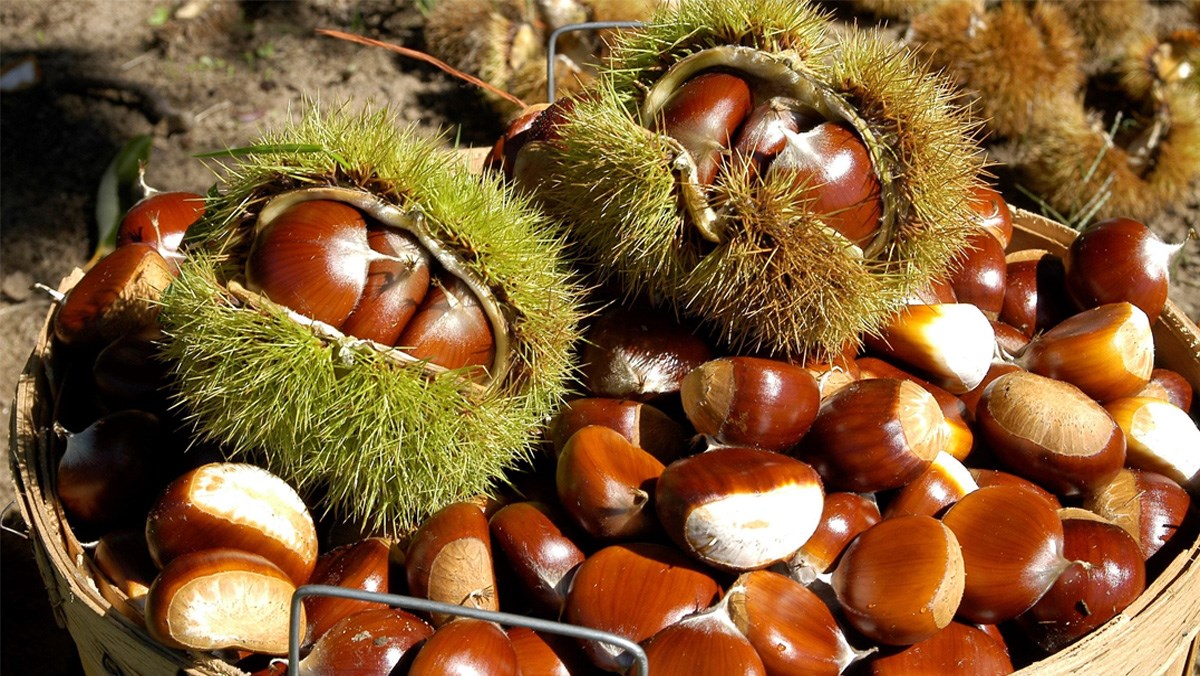
When harvested, Sapa’s specialty wild chestnuts stand out with their dark brown color and shiny appearance
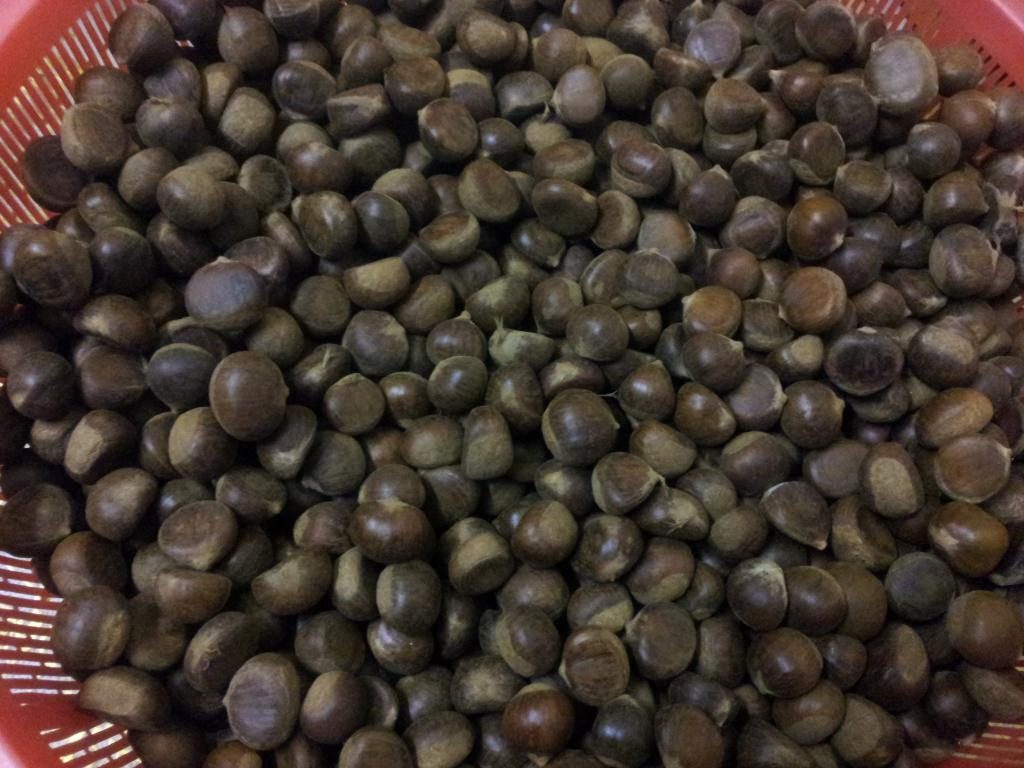
Sapa wild chestnuts are small in size, not as large as regular chestnuts
2Benefits of eating Sapa wild chestnuts:
Not only scoring points with its shiny appearance and delicious taste, wild chestnuts are popular with visitors to Sapa thanks to their nutritious ingredients, supporting care and promoting optimal health. Specifically:
– Reduce symptoms of venous insufficiency: Wild chestnuts contain aescin – an active ingredient that promotes blood circulation to the veins, helping to overcome chronic venous insufficiency, with common symptoms such as leg swelling, cramps or leg ulcers.
– Anti-inflammatory: The active ingredient aescin also has effective anti-inflammatory effects on injured and swollen skin areas.
– Promote cerebral blood circulation: With abundant vitamin B content, wild chestnuts help promote cerebral blood circulation, effectively overcome and prevent headaches, dizziness, vertigo or memory loss.
– Stabilize blood sugar: Wild chestnuts contain a lot of soluble fiber. When combined with water in the stomach, it can form a gel that helps stabilize blood sugar and reduce blood cholesterol.
– Effective weight loss: Using wild chestnuts is an effective secret to losing weight, thanks to chestnuts containing a lot of carbohydrates, which not only replenish energy for the body, but also create a feeling of fullness for a long time, reducing cravings.
– Prevent cancer: Sapa chestnuts contain high levels of Manganese. According to the Maryland Medical Center (USA), Manganese is one of the powerful antioxidants that neutralizes free radicals, thereby reducing the risk of cardiovascular disease, blood clotting disorders and even stroke. cancer.
– Other uses: According to scientific research, wild chestnuts are rich in Omega-3, which helps protect the heart and prevent diabetes. In particular, using wild chestnuts every day helps the body increase resistance and treat some kidney diseases, asthma or osteoarthritis.
3Where to buy specialty wild chestnuts in Sapa?
When coming to Sapa, visitors can easily enjoy delicious, nutritious wild chestnuts everywhere, typically in some areas such as:
3.1 Buy wild chestnuts at street vendors
You can find prepared wild chestnuts at street vendors along the streets of Sapa, next to luxury restaurants or hotels. After that, sipping hot chestnuts while feeling the cold weather in the mountains of Sapa is truly a wonderful experience, right?
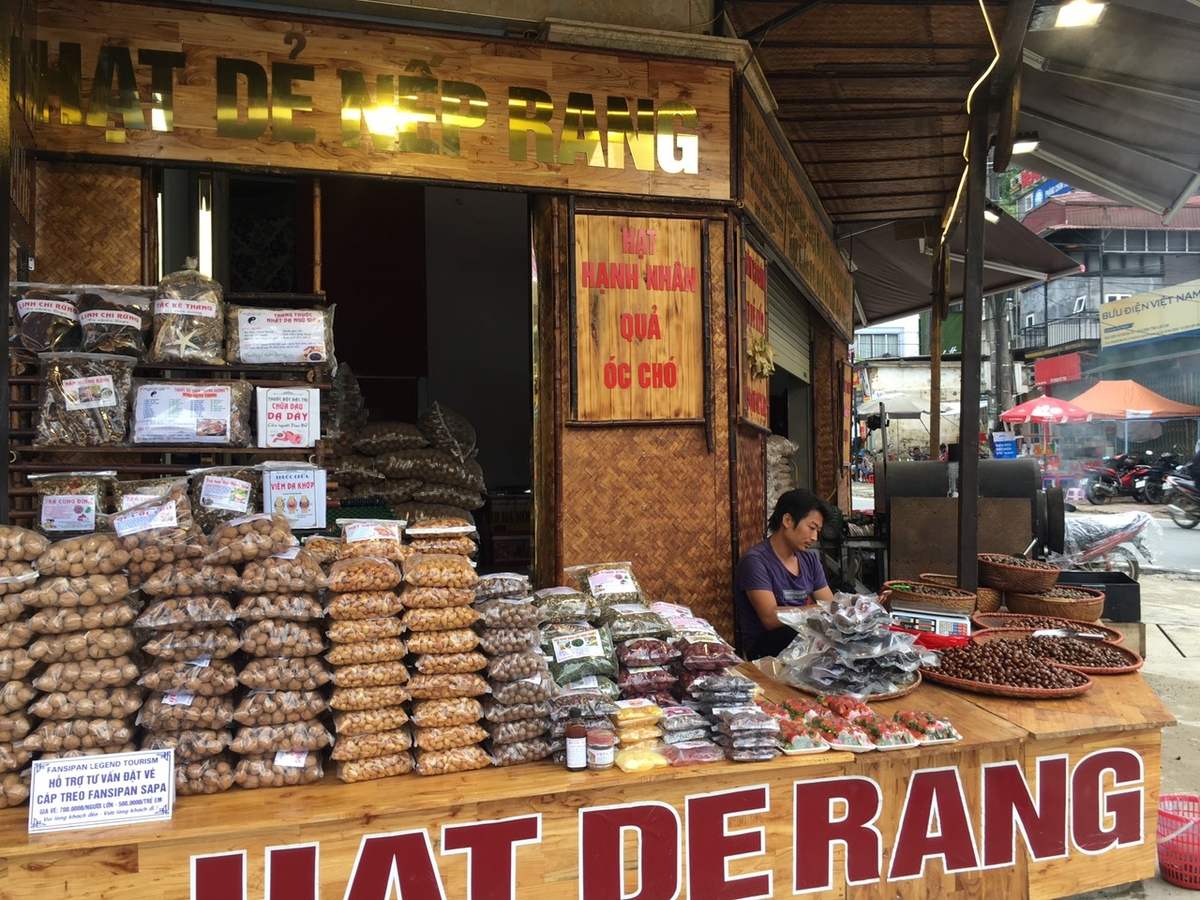
This is a place visited by many tourists, where they can both try before buying, and prepare and enjoy right on the spot.
3.2 Buy wild chestnuts at Sapa market
At the dry goods stall in Sapa market, visitors can not only buy specialty wild chestnuts, but can also buy countless other delicious snacks as gifts such as dried beef, buffalo meat, and pork. in the armpit hammock village, black mushrooms, green rice or alder rolls.
3.3 Experience harvesting wild chestnuts at the garden
In addition to buying wild chestnuts directly, there is also an interesting experience for visitors, which is harvesting right in the garden at the foot of Hoang Lien Son mountain. In the garden, wild chestnut trees are planted in straight rows. The tree canopy is large, creating a cool and pleasant feeling.
To harvest chestnuts, tourists are equipped with bamboo chopsticks and a tray. In particular, when you come here, you can encounter many rodents that like to eat chestnuts like chipmunks. This is truly a lively and interesting experience not to be missed when visiting a peaceful mountain region like Sapa.
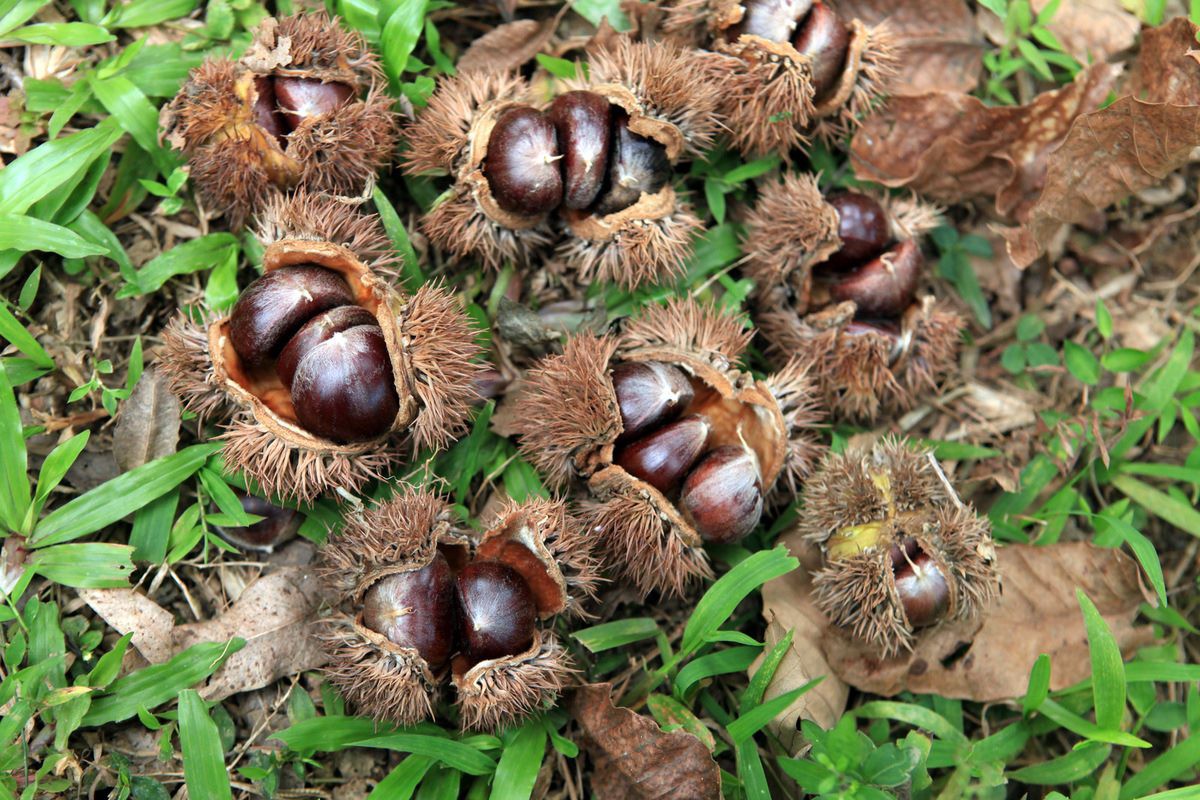
After ripening, wild chestnuts can fall around the base of trees in the garden
4How to choose delicious, fatty Sapa forest chestnuts
To buy delicious wild chestnuts, ensuring excellent quality, visitors can refer to the selection below:
– Color: When choosing to buy Sapa wild chestnuts, you should prioritize nuts with a dark brown, shiny shell and a surface with white fluff on top.
– Size: Normally, Sapa forest chestnuts are small in size and feel sturdy in the hand when held. For nuts that are too large, it should be noted that these may be Chinese chestnuts, typically in the Chongqing area.
– Chestnut filling: When choosing Sapa’s specialty wild chestnuts, visitors should check the meat inside. Delicious chestnuts, when roasted or grilled, have a beautiful yellow or white color, fresh and delicious kernels, and a very unique aroma.
5Suggestions on how to process Sapa wild chestnuts
Below are the TOP 3 ways to cook delicious wild chestnuts that many housewives use:
5.1 How to prepare delicious wild chestnuts with honey
To make honey-roasted chestnuts, first you need to cut a shape on the chestnut body, brush a thin layer of oil on the shell, then put it in the oven and bake for about 10 minutes at a temperature of 180 degrees. After 10 minutes, take it out, brush with cooking oil mixed with honey, and continue baking for another 15 minutes. Finally, arrange it on a plate and enjoy.
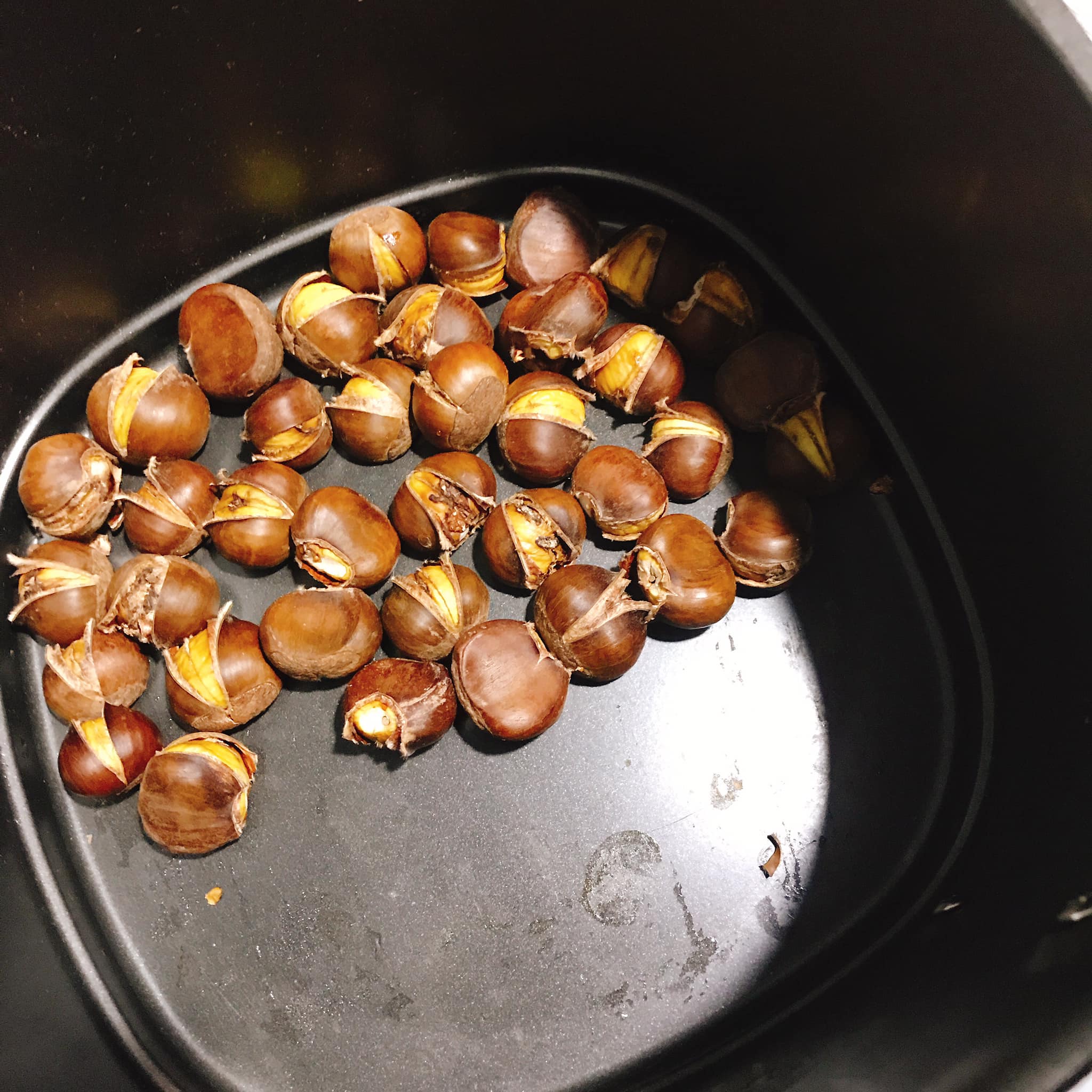
After being roasted with honey, chestnuts have a very fragrant aroma
5.2 Boiling is a popular way to prepare wild chestnuts
How to do it is extremely simple. First, you choose ripe, moderately sized wild chestnuts. Then, wash it and put it in the pot, paying attention to pouring water until it boils. Boil for 30 minutes, until the chestnuts are soft, carefully drop them into a basket, drain and enjoy.
5.3 How to cook Sapa wild chestnuts by roasting them with butter or salt
To make roasted chestnuts with butter or salt, you should boil them first. Then, pour into the basket and let cool. In the step of roasting chestnuts, use a cast iron pan to make the chestnuts smell more delicious. Place the pan on the stove, add the chestnuts and stir well so the chestnuts cook evenly without burning.
After about 10 minutes, when the chestnuts are dry and have a characteristic aroma, lower the heat, add butter or salt, and stir well to let the chestnuts absorb the spices. Cook a little more and you can put it on a plate and enjoy roasted chestnuts with salt or hot butter, blowing and eating!
The nutty chestnuts combined with the aroma of butter or the salty taste of salt are absolutely delicious, you will definitely fall in love with it in just the first bite. In addition, wild chestnuts are also processed into many other delicious dishes, typically: braised pork leg with chestnuts, chicken stuffed with chestnuts, stir-fried chicken with chestnuts, chestnut salad, chestnut fried rice, young rib soup. chestnut…
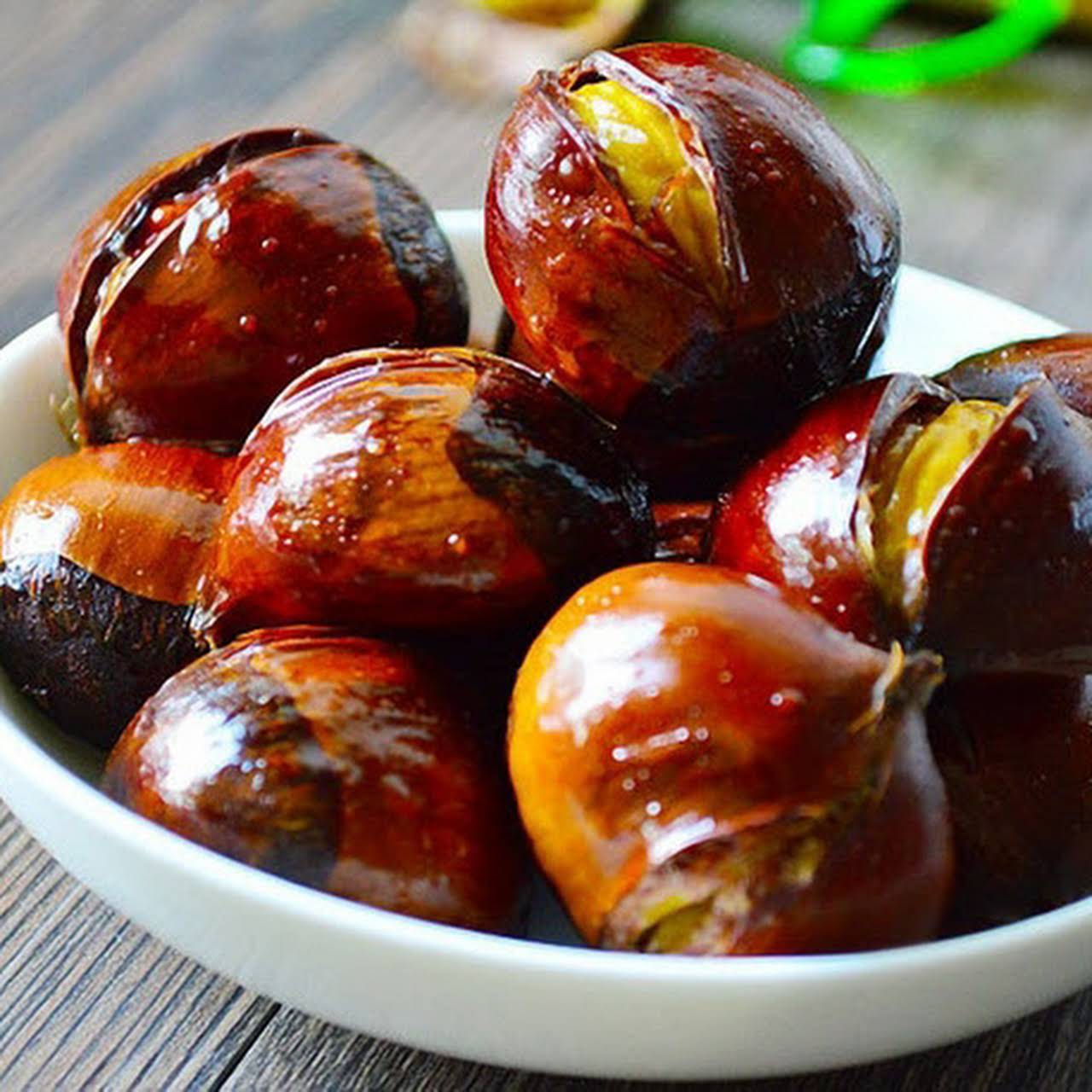
Once finished, the roasted chestnuts have an extremely attractive color and fragrant aroma
6How to preserve wild chestnuts
Whether processed or not, users must preserve chestnuts properly. Specifically:
For raw wild chestnuts: Put it in a box or tray, put it in the freezer and it can be stored for 1 month. If you only need to preserve it for 10 days, put it in a plastic bag, poke holes in it, then store it in the refrigerator.
For ripe wild chestnuts: If it’s less than 3 days, leave it outside, no need to put it in the refrigerator or plastic bag. In case of storing processed wild chestnuts for more than 3 days, you should put them in your refrigerator. When you need it, take it out and steam/roast it again.
7How much does Sapa’s specialty wild chestnut cost?
There are many different prices for Sapa specialty – wild chestnuts. On average, the cost to buy 1 kg of wild chestnuts ranges from 200,000 VND – 350,000 VND depending on the place of sale.
8Notes when using Sapa wild chestnuts
To ensure safety when using Sapa wild chestnuts, users should follow some important notes below:
– Wild chestnuts are not suitable for people with sensitive digestive systems, postpartum women, people with malaria, colds or dysentery. If consumed in even a small amount, it can cause symptoms of stomach pain, choking, indigestion, constipation, spleen damage or stomach bleeding.
– For diseases related to the liver or kidneys, users should avoid using wild chestnuts because this increases the risk of poisoning, even leading to cancer.
– Do not use wild chestnuts while using the medicine. Because some active ingredients in the seeds interact with medications, they may reduce effectiveness or cause unwanted symptoms.
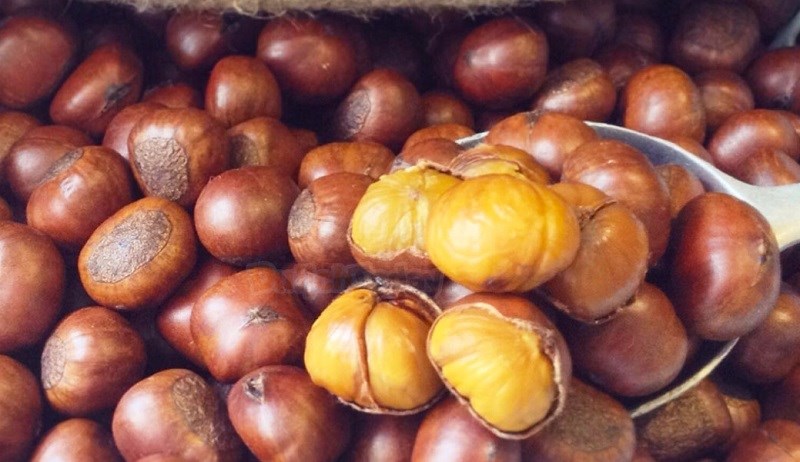
Although wild chestnuts are delicious, you must be careful when using them to ensure health safety
Sapa wild chestnuts are not only a delicious dish, but also extremely good for health. This is also a suitable gift to give to relatives or friends on special occasions. If you have the opportunity to visit Sapa, you must definitely enjoy the delicious specialty of wild chestnuts here!
